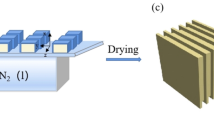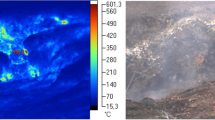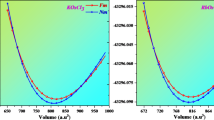Abstract
Gordon and Campbell published a paper1 in which the differential thermal analysis of potassium perchlorate is illustrated from the point of view of the characterization of this compound rather than the details of its decomposition. In this work, where the differential thermal analysis was carried out in a test-tube in an open furnace, a large endotherm following the initial exotherm after fusion was observed. Later, Markowitz and Boryta2 became interested in the details of decomposition as revealed by differential thermal analysis and pointed out that this endotherm is due to the molten sample rising up the sides of the tube resulting in separation of the sample from the thermocouple. This gives rise to an apparent endotherm at that point. These authors attempted to overcome the thermal effects which accompany the separation of the sample from the thermocouple by carrying out the thermal analysis in a closed furnace system. Although the endotherm in question is not observed under these conditions, the details of the decomposition are missed, undoubtedly due to the large mass of sample used in these experiments and because of poor heat transfer conditions in the closed furnace system. The approach in conducting the differential thermal analysis experiments in the present work is to adjust the sample mass and dimensions of the sample container so that the decomposing gases will not force the reacting mass up the tube. This results in intimate contact of the sample with the thermocouple throughout the entire reaction, which is after all the best condition for the differential thermal analysis experiment. It was found that when 500 mg and less of potassium perchlorate are contained in test-tubes with a ninside diameter of 16 mm separation of the sample from the thermocouple does not occur. These experiments show that it is possible to obtain detailed differential thermal analysis curves for decomposition reactions which are accompanied by violent foaming and bubbling by adjusting sample weight and geometric experimental parameters. In this work the detailed differential thermal analysis curve for the decomposition of potassium perchlorate is presented for the first time, which reveals two exothermal processes: one during decomposition prior to the precipitation of potassium chloride and the other which occurs simultaneously with the precipitation of potassium chloride. This was determined in differential thermal analysis experiments carried out in a metal block previously described1 where provisions were made for observing the sample as it was heated.
This is a preview of subscription content, access via your institution
Access options
Subscribe to this journal
Receive 51 print issues and online access
$199.00 per year
only $3.90 per issue
Buy this article
- Purchase on SpringerLink
- Instant access to full article PDF
Prices may be subject to local taxes which are calculated during checkout
Similar content being viewed by others
References
Gordon, S., and Campbell, C., Anal. Chem., 27, 1102 (1955).
Markowitz, M. M., Boryta, D. A., J. Phys. Chem., 64, 1711 (1960).
Harvey, A. E., Wassink, C. J., Rodgers, T. A., and Stern, K. H., Ann. N.Y. Acad. Sci., 79, 971 (1960).
Simchen, A. E., J. Phys. Chem., 65, 1003 (1961).
Bircumshaw, L. L., and Phillips, T. A., J. Chem. Soc., 142, 703 (1952).
Author information
Authors and Affiliations
Rights and permissions
About this article
Cite this article
ANDERSON, D., FREEMAN, E. Differential Thermal Analysis of Potassium Perchlorate. Nature 195, 1297–1298 (1962). https://doi.org/10.1038/1951297a0
Issue date:
DOI: https://doi.org/10.1038/1951297a0
This article is cited by
-
Thermal analysis of binary mixtures of CaO, CaO2, Ca(OH)2, and Mg(OH)2 with sodium and potassium perchlorates
Russian Chemical Bulletin (1996)
-
Differential thermal analysis of potassium perchlorate
Journal of Thermal Analysis (1981)
-
Physical Transitions of the Alkali Metal Nitrates as Revealed by Differential Thermal Analysis
Nature (1963)



